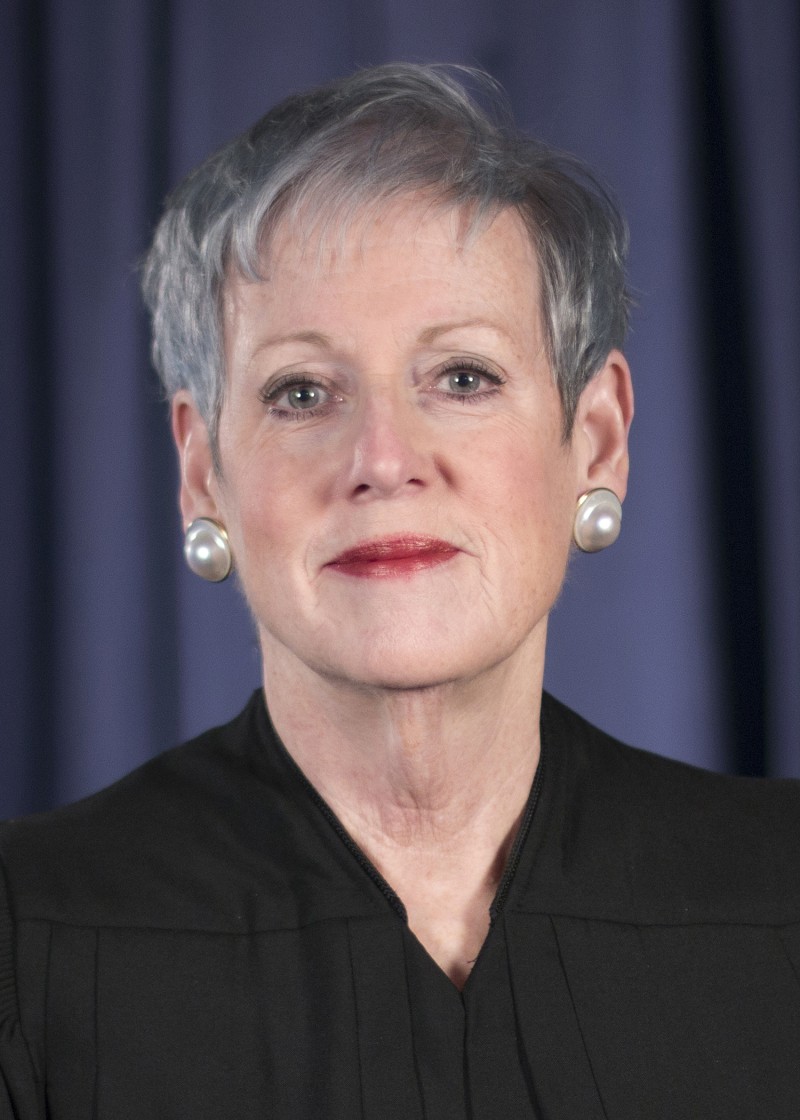Maureen O'Connor
Maureen O’Connor was the tenth Chief Justice of the Supreme Court of Ohio and the first woman to lead the state judicial branch of government. She was the first chief justice to retire from the office and upon her retirement was the longest-serving statewide elected woman in Ohio history.
As chief justice, O’Connor led significant reforms and improvements in the Ohio judicial system and was a leader nationally. She is a past president of the National Conference of Chief Justices and former chair of the National Center for State Courts Board of Directors.
O’Connor was the architect of the modern courts in Ohio. She ushered in electronic filing at the Supreme Court, provided appellate courts with a modern case management system, and committed more than $40 million to local courts to enhance technology. This funding increased access to justice and reduced the cost of justice for litigants, defendants, and the public. The foresight made Ohio a leader in its ability to continue court operations and the administration of justice through the peak of the COVID-19 pandemic and beyond.
Maureen O’Connor worked to improve fairness in the judicial system. She was selected by her peers in the Conference of Chief Justices and the Conference of State Court Administrators to co-chair the National Task Force on Fines, Fees, and Bail Practices in 2016. In Ohio, she advocated for reform to ensure people were not held in jail prior to resolution of their case simply because they could not afford bail. She spearheaded the creation of a statewide criminal sentencing database and a uniform sentencing entry to establish standardized data for felony sentencing. She established a task force to maintain public trust and confidence in grand juries, created a committee to examine the administration of the death penalty, and proposed improvements to strengthen judicial elections in Ohio. O’Connor created a task force on conviction integrity to look at policies and practices to determine equity, fairness, and advise the judiciary and the legislature.
Recognizing emerging opioid abuse and its impact on court dockets, O’Connor initiated a regional consortium of eight states, working together to combat the nation’s opioid epidemic. The model was replicated elsewhere in the country. She increased the role of specialized dockets, to bring community resources together and make treatment available to provide opportunity for a second chance where substance abuse or mental health disorders lead to court involvement. She held trial courts in esteem for the challenging work they do and the opportunities they create.
Maureen O’Connor became the 148th justice of the Supreme Court of Ohio following her first statewide judicial election. In January 2003, she was the sixth woman seated on the Court, a member of the first-ever female majority. When Ohio voters reelected her in 2008, she carried all 88 Ohio counties. In 2010, her election as chief justice garnered approximately 68% of the vote and all counties. She was reelected again in 2016, serving until her constitutionally mandated retirement.
From 1985 to 1993, O’Connor served as Magistrate, Summit County Probate Court. From 1993 to 1995, she served as Judge, Summit County Court of Common Pleas. As a busy trial judge, O'Connor was elected by her peers to serve as the administrative judge – a testament to her ability to build coalitions and maintain collegiality while administering to the business of the courts.
O’Connor left the Summit County bench to serve her community as Summit County Prosecuting Attorney from 1995 to 1999. She reformed child support enforcement, aggressively prosecuted repeat offenders, violent criminals, and public officials who committed ethical violations or improprieties. She lobbied the General Assembly for tougher laws on rape and gang-related offences. Her work received accolades from victims’ rights groups and was honored by Cleveland State University with the Distinguished Alumnae Award for Civic Achievement and received numerous other awards.
In 1999, she was elected with Governor Bob Taft to serve as Ohio Lieutenant Governor and Director of the Ohio Department of Public Safety, the first woman to serve in that role. After the attacks of September 11, 2001 (known as 9/11), she became the state’s first liaison with the newly formed U.S. Dept. of Homeland Security. As Ohio’s leader in Homeland Security, she chaired the State of Ohio Security Task Force and the State Building Security Review Committee.
Born in the nation’s capital and raised in Strongsville and Parma, Ohio, O’Connor’s career in public service and the law spanned three decades. She earned her Bachelor of Arts at Seton Hill College in 1973 and a Juris Doctorate from the Cleveland-Marshall College of Law at Cleveland State University in 1980. Born August 7, 1951. She has two adult children and six grandchildren.

b. Washington, D.C.
148th Justice of the Supreme Court of Ohio
TERM
Jan 1, 2003
to Dec 31, 2022
